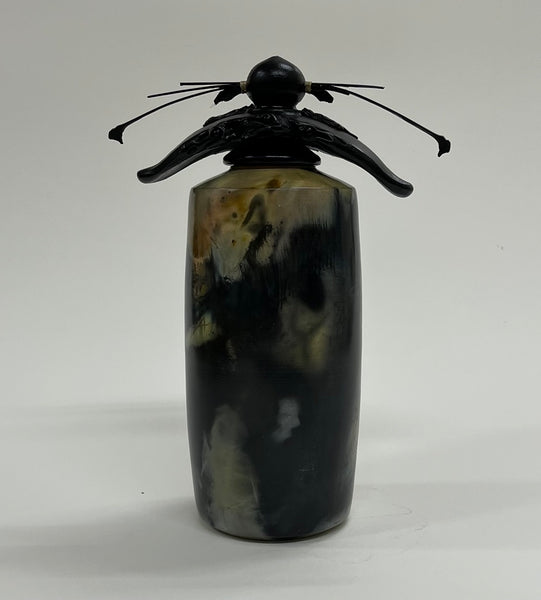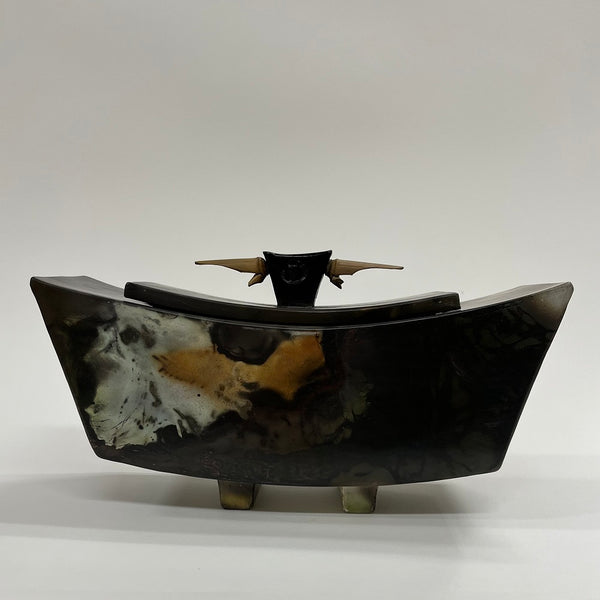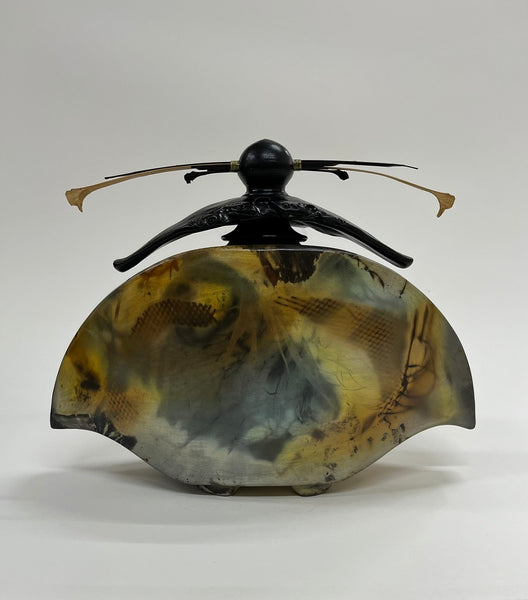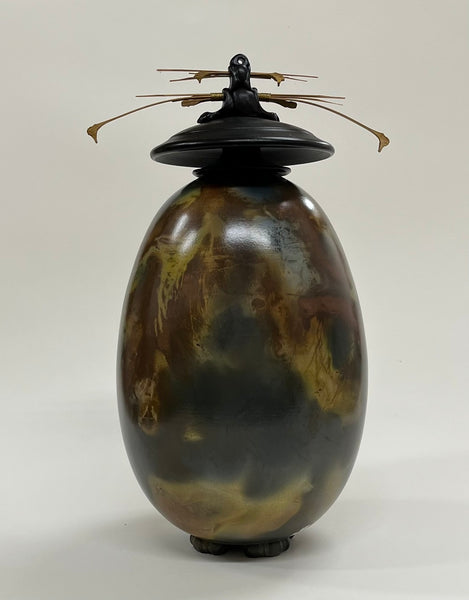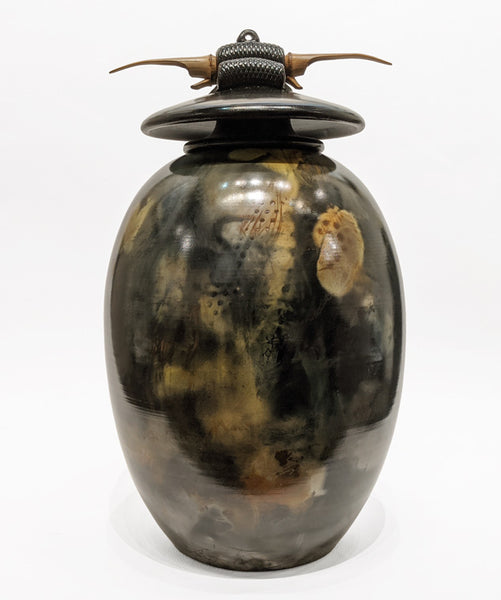Geoff Searle attended the Kootenay School of Art in Nelson, British Columbia, with the original intention of painting and drawing. However, he became enthralled by the clay process and has been working as a potter since 1972, producing lines of stoneware and porcelain as well as an extensive range of raku and pit-fired pieces.
The lustrous satin finish, rich tones of nature and exquisite symmetrical precision of his pieces are standouts in the world of handcrafted artistry. Geoff achieves a full range of colorful hues in pit-fired burnished vases by fuming metallic salts and organic materials. His delicate handcrafted lids incorporate carved bamboo to reflect an exotic Oriental influence. Each finished piece is a one-of-a-kind object of art.
“It always amazes me that my pots find their way all over the world and into private homes and collections and that people can get such joy and stimulation from something that I have created with my hands,” says Geoff. He remains motivated by a sense of mystery about the medium of clay. “It is a great advantage to look forward to getting up and going to work every day at a job that I enjoy and to create fresh new shapes and designs.”
In addition to working at his Fraser Valley studio, Geoff is in demand as a workshop teacher on subjects of clay, glazes, kiln-building and pit-firing.
The Pit-Fired Process
Pots from the potter’s wheel are left to dry to a leather-hard stage. After trimming to a final shape, each piece is polished to a mirror-like finish using the back of a silver spoon. As the work dries, it is polished twice more, until the surface is satin smooth.
The pot is then fired to approximately 1700 degrees Fahrenheit reaching a “biscuit” stage. Once cooled the pot is wrapped in an assortment of organic materials and metallic salts, which are fumed during a second firing inside a saggar (a box made of fireclay) in a pit, dug into the ground.
All the pieces are fired in the same way, yet they all come out differently. Straw, copper, iron and pine needles add to the variety of patterns and colours in the work.
The combination of burnishing clay and firing in a ground pit is not a new idea. The method has been used for centuries. By adding organic materials and metals to the process, many unique, complex and exciting pieces are created.














